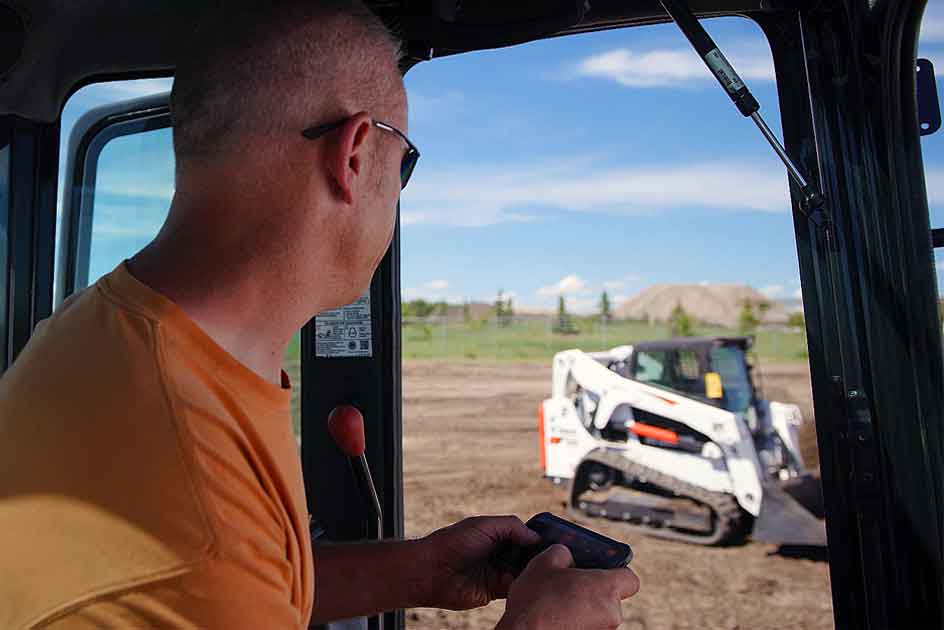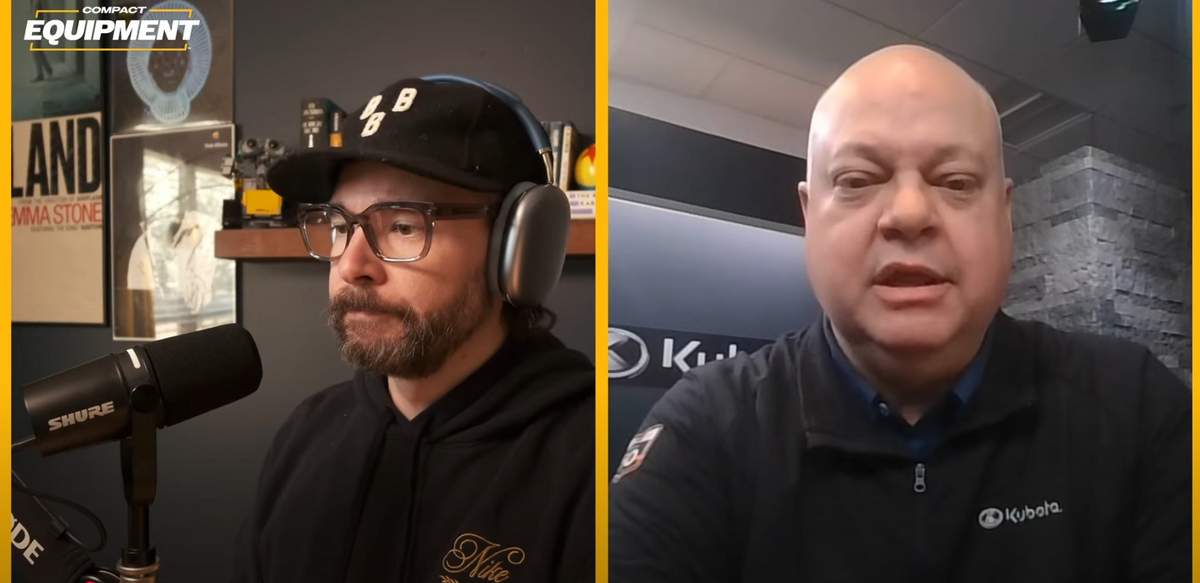SKID STEER – Hustle and Flow
 When skid steers were first forged, they came with attachments. Back in 1957, when the forbearer of the modern skid steer was invented in Rothsay, Minn., by brothers Cyril and Louis Keller, the first units had only three wheels, a 6.6-hp Kohler engine and a rope starter, but they still took four attachments — a utility scoop, manure fork, snowblower and sweeper. From its creation, the skid steer was designed as a little loader and a big tool carrier. It’s also a hustler out in the field. Today, it’s North America’s ultimate multifunctional machine. That’s because of its attachment system.
When skid steers were first forged, they came with attachments. Back in 1957, when the forbearer of the modern skid steer was invented in Rothsay, Minn., by brothers Cyril and Louis Keller, the first units had only three wheels, a 6.6-hp Kohler engine and a rope starter, but they still took four attachments — a utility scoop, manure fork, snowblower and sweeper. From its creation, the skid steer was designed as a little loader and a big tool carrier. It’s also a hustler out in the field. Today, it’s North America’s ultimate multifunctional machine. That’s because of its attachment system.
Of course the earliest skid steers could not even power those first attachments. They essentially had pin-on attachment systems with no auxiliary hydraulic technologies, and attachments were powered by the push and pull of the loader itself. It took a few decades to harness the high technologies of hydraulics. A whole new industry of skid steer engineers, attachment makers and hydraulic OEM experts emerged over the last three decades with the proliferation of skid steers using fluid power systems.
Over 50 years, the skid steer and its subsequent cousin the compact track loader have become some of the most recognized pieces of equipment on construction sites, landscape projects, farm yards and rental lots. That has a lot to with its utilitarian nature. The rise of hydraulics has made skid steers and compact loaders kings of attachments. Whether it’s a massive cold planer to strip asphalt, a serious stump grinder to remove old trees or a large wood chipper to dispose of the debris, there are as many attachments as applications on the skid steer market.
The steely heart of a skid steer is a diesel engine. That diesel power plant pumps energy to all of the machine’s many wheels, tracks, loader arms, attachments and other functions. In the belly of the beast, this diesel engine transmits its energy to a set of hydraulic pumps bolted directly to the output of the engine. A total of up to four hydraulic pumps hooked up to the engine power the loader arms, hydraulic drive motors, auxiliary hydraulic circuits and the unit’s attachments.
Most skid steers on the market utilize two hydraulic pumps to achieve the optimum balance between driving and lift arm and attachment functions. These are generally referred to as the main pump and the auxiliary pump. The main pump provides power to hydraulic drive motors, which in turn provides power to the axles and wheels. The auxiliary pump provides direct oil flow to the lift arm and hydraulic attachment operation. In the drive system, it is common to use two drive pumps and two drive motors — one of each, for each side. For attachment operation and lift arm functioning, there is typically one hydraulic pump. Although some machines can utilize two or three, depending on the ultimate hydraulic needs of the attachments or machine.
In most types of pumps, the flow rate is determined by the pump’s speed (which is equal to the speed of the engine) and its displacement (the volume of the cylinders in the pump). The faster a given pump spins, the higher the flow rate. The pressure is determined by the tasks the operator is performing, the attachment he or she is using and the flow system of the skid steer or track loader.
Walk onto a dealer lot today and you’ll see that hydraulic systems come in two configurations — standard flow and high flow. Standard-flow auxiliary hydraulics generally range from 10 gallons per minute (gpm) on smaller skid steers to 32 gpm on larger models. High-flow auxiliary hydraulics typically range from 31 to 41 gpm, providing more flow to get work done with bigger, more complex implements. Customers pay approximately $1,600 to $1,800 extra to equip a skid steer with high-flow hydraulics, but customers are demanding it more and more. Flow rates overall are a growing trend.
Keith Gribbins is managing editor of Compact Equipment, based in Brecksville, Ohio.




